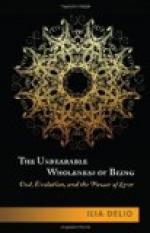I will here quote a few more passages from Dvorak, who, in dealing with the individual arts, does not lose sight of the whole. “Simultaneously with a new literature,” he says, “we have a new art of illustration, new miniatures, no longer drawing inspiration from antiquity.... We meet the new style in its full perfection wherever it is a matter of a new technique (in the art of staining glass, for instance, or of illustrating profane literature)....” He speaks of a new decoration of manuscripts invented in Paris in the first half of the thirteenth century. Thus the close and causal connection between the new poetry and the illumination of books is clearly apparent, and it may be said without exaggeration that the Provencal lyric poetry and the North-French and Celtic cycles of romance led up to the new European style of painting which did not come to perfection until two centuries later. (Nothing positive can be said about the influence of France on Italian art; the monumental character and the art of Cimabue, Giotto and the Sienese does not, however, suggest that they were much influenced by the art of miniature painting, but rather hints that they drew inspiration from antique frescoes.)
I must add a few words on the subject of those miniatures which are not easily accessible to the layman, but reproductions of which are frequently met with in books on the history of art. In addition to religious subjects, the whole courtly company which lives and breathes in the legends of the Round Table, kings and knights, poets, minstrels, and fair damsels, hawking, jousting, banqueting and playing chess, everything which stirred the poet’s imagination, is depicted. The spirit of the romances which in modern times enchanted the English Pre-Raphaelites, six centuries ago provided food and stimulus to the industrious illuminators whose names have long been forgotten.




